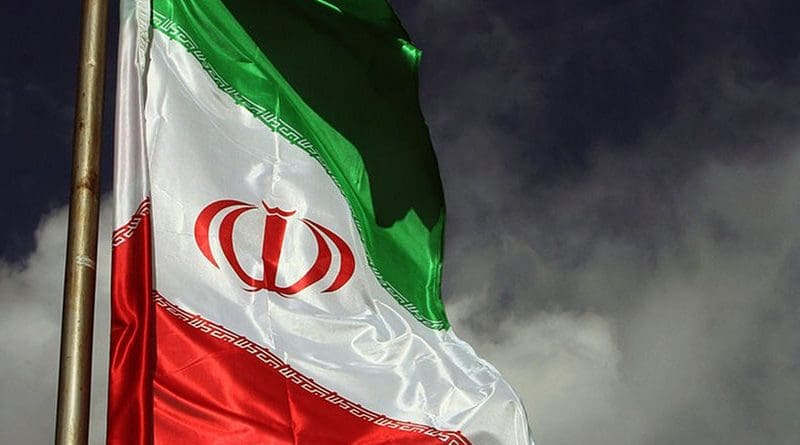Iran: ‘Undignified’ Until The End – OpEd
The testimony of the family who had to bury their mother deceased recently due to the COVID-19 reveals how Iran neglects basis anti-epidemiological standards and further violates human rights.
There is no province in Iran without a COVID-19 case, known also as the Wuhan virus or coronavirus. Since February 20 when the Tehran regime reported to the World Health Organisation the first two patients who died on that day with a positive diagnosis, the number of infected has increased to forty seven and a half thousand. Sixty-seven per mille of the Iranian population has been affected by the disease. It is the highest rate of contagion in the region, from five to ten times higher than in Iraq, Azerbaijan and Turkey, which share the border. The rate of virus transmission in the regional areas, according to the official data, has been slower.
But even the statements of Iranian officials contradict these optimistic statistics. “Every hour fifty people contract COVID-19, and every ten minutes an ill person dies,” stated Kianoush Jahanpour, head of the Public Relations and Information Center of Ministry of Health and Medical Education of Iran.
The official number of deceased has been on 3,036 as of March 31. But the well-informed Iranian opposition group National Council of Resistance of Iran with headquarters in Paris informed that at least five times more died.
During this epidemic, death appears to knock at the door of Iranian households in almost every city with a large population. It did not pass the city of Khorramabad, capital of the Western province of Lorestan with four hundred and seventy-six positive cases, according to the official statics.
On March 8, a mother of three died in the in Ashayer hospital in Khorramabad. A daughter learned about her passing after she called because no one informed the family. Her brother had to pass the corridors of the departments for the COVID-19 patients to pay the bills significantly higher than usual.
The preparation of the body for the funeral also looked much different and more painful for the family.
The ambulance driver, who brought it to the morgue and the worker were visibly stressed. One did not leave, the vehicle, the other only opened the door and stood aside. Two brothers on their own, without a protective uniform, identified their deceased mother, placed into the plastic casket and loaded onto an ambulance, which transported it to the funeral home. We had no choice we weren’t ready for it at all, remembers one of the brothers.
There, on their own, they had to place the corpse into a refrigerator marked with Scotch tape.
It was only the beginning of traumatic experiences. They paid five times more than usual for the grave and the protective gear for those who were preparing a body for a funeral. The religious family was not permitted to have a clergy celebrant. According to the health ministry, only two or three persons could participate. After family prayed together, two cousins lowered to the grave.
The body was placed three meters below the ground level. The state demanded to carpet the grave with powdered Lime and also to cover the body with it. According to the Iranian tradition, family member removes the fabric from the face of the deceased loved one. But this time the family could not fulfill that custom. I did not pull the shroud off the face of my mother. What child could place the lime powder on their mother’s face?!, asked one of the brothers.
The tragic story is evidence that the Iranian regime may not be able to control the spread of the virus. The unsupervised burial of the infected deceased with violation of the sanitary conditions is one evidence for it.
The family who lost their mother due to the COVID-19 claims that the health authorities did not test them either, but only recommended self-isolation.
“The sadness of losing a mother is a cause for deep pain. Perhaps those who are responsible for humiliating us will change after they read this story”, the brother stated. “After all we are also human beings”.
Iran’s GDP rate was 3.5 percent in 2018, according to the World Bank. The fall in oil revenues was devastating for the economy based mainly on the hydrocarbon sector. The political conflict with the United States over the Iran nuclear program ended with economic sanctions which caused calamity that triggered serious protests in Iran last year.
The Tehran regime claims about abundance at home, about shortages abroad. Astonishingly Tehran claims that the medical sector has sufficient resources. “Until today, we had no shortages of beds, nurses, or doctors. Even in intensive care units, in most cities and provinces, we have reserves” stated Hassan Rouhani on March 25, according to the National Council of Resistance of Iran. The officials claim that abundance of the medicines makes international humanitarian aid redundant. But the Iranian opposition accuses the regime of lying.
While Iranian diplomats are complaining abroad about the shortages caused by the US sanctions (although, the economic targeted measures do not affect the medicines and food) at the same time at home Tehran claims that it has sufficient supplies.
Iranians are victims of that double-level propaganda utilized by the Tehran regime. Unlike the majority of the citizens of Western democracies, they will not receive the equivalent of their salaries, and their bills will not be delayed or canceled to sustain their lives. They will also have to continue to bury their deceased loved ones on their own, without any protection, assistance or dignity.

